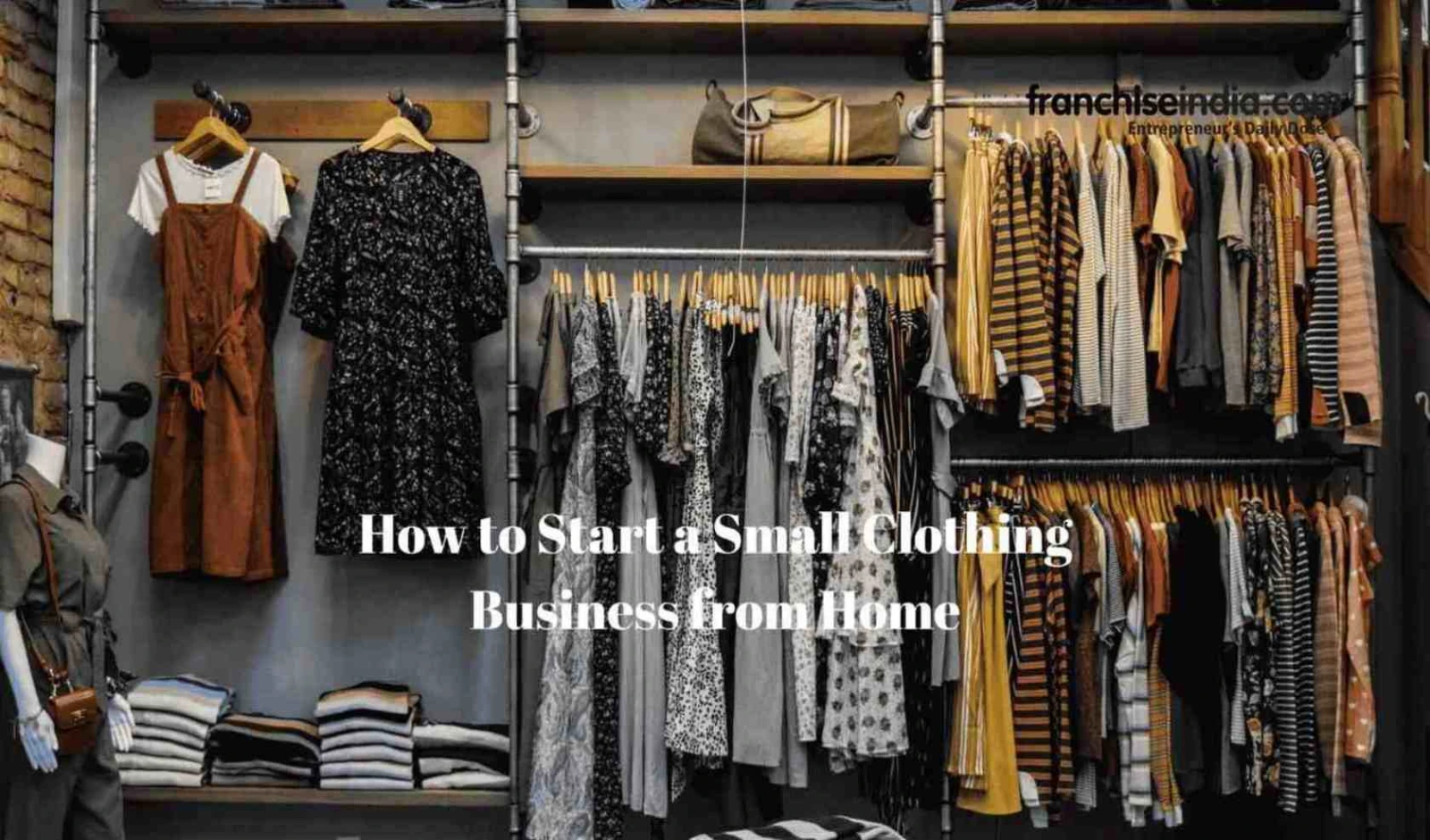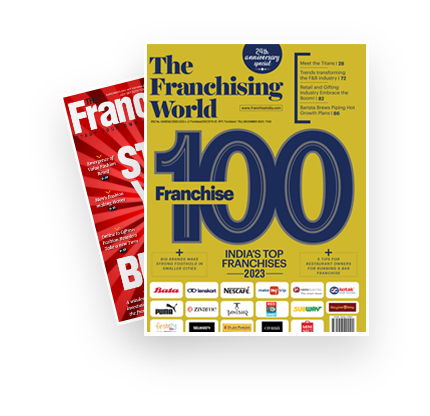
Starting a clothing business from home is honestly one of the easiest and most creative ways to earn these days, especially in India. You don’t need a ton of money to get going, you set your own hours, and you skip the headache of paying for a shop. Thanks to WhatsApp, Instagram, Meesho, Jiomart, and the whole online boutique wave, even home sellers are reaching customers all across India—and turning a steady profit. Whether you love women’s wear, kids’ clothes, men’s casuals, nightwear, ethnic fashion, or want to create something totally unique, there’s space to grow. This market just keeps picking up steam. India’s clothing industry is already worth over ₹5.6 lakh crore, and it’s growing fast—about 10% to 14% every year until 2030—driven by more people shopping online, a bigger interest in fashion, and the rise of homegrown boutiques. In this guide, I’ll show you the whole journey. We’ll cover planning, finding suppliers, designing, building your brand, setting prices, marketing, and how to scale your home-based clothing label.
In this article we are going to cover how to start a small clothing business from home, including every crucial step. Read this article till the end to clear your doubts.
Also read: 21 Profitable Business Ideas in Hyderabad in 2026
Step-by-step approach of how to start a small clothing business from home
1. Understanding the Clothing Business Model
.png)
You can start a home clothing business in a bunch of different ways—it really depends on your budget, your skills, and who you want to sell to. Pick the right model before you spend any money. If you’re just starting out, reselling is an easy option: buy ready-made clothes in bulk and sell them for a markup. You’ll need anywhere from ₹10,000 to ₹60,000 to start, and you can expect margins around 20–40%. If you know how to stitch or design, you can open a boutique or custom clothing business from home. This usually takes ₹30,000 to ₹3,00,000 but pays off with higher margins—up to 40–100%.
Dropshipping is another way to go, especially through Meesho or Amazon. You don’t need to keep stock, but margins are lower (10–25%). If you can tailor or do alterations, open a small studio right at home—the margins here are huge (sometimes 60–300%). And if you’re creative, handcrafted or embroidered clothing is always in demand and can be very profitable.
2. Initial Planning – Define Your Niche
.png)
Finding your niche is key. It helps your brand stand out and attracts the right crowd. India’s clothing scene is packed with opportunity.
- Women’s ethnic wear—think kurtis, sarees, suits, and lehengas—always sells.
- Kids’ wear is another hot market since kids outgrow clothes so fast, so parents are always buying.
- Men’s casuals, especially shirts and T-shirts, move well both online and offline.
- Nightwear and loungewear are booming lately—everyone wants comfort.
- Plus-size fashion is a fast-growing segment, with loyal customers and less competition.
If you want to go premium, bridal wear, festive outfits, or Indo-western fusion styles can be a smart move.
3. Required Investment and Setup Cost
.png)
You don’t need a huge investment to start, especially if you keep it small and grow bit by bit. Your biggest expense will be inventory, which can run from ₹10,000 to ₹1,00,000 depending on what you’re selling.
- If you want to stitch or customize clothes, you’ll need a tailoring machine—these range from ₹6,000 to ₹50,000 depending on the brand and features.
- For branding, set aside ₹2,000–₹15,000 for packaging and labels.
- Marketing on social media will cost anywhere from ₹2,000 to ₹20,000 per month, depending on how aggressively you want to promote.
- You’ll also want a decent setup for product photos; that can be done for ₹1,000–₹10,000.
Don’t stress about legal stuff at the start—registering your business and getting GST sorted usually costs up to ₹8,000 and can be done later.
Also read: 15 Profitable FOCO Model Businesses in India
4. Sourcing Clothes or Raw Material
.jpg)
Getting the right products at the right price is a big deal. India’s packed with wholesale textile markets where you can buy in small or big lots. Surat is known for sarees, dress materials, and kurtis. In Mumbai, check out Dadar, Dharavi, or Mulji Jetha for fabrics and ready-mades. Delhi’s Gandhi Nagar and Karol Bagh are packed with wholesale clothing of all kinds.
For ethnic prints and traditional looks, Jaipur’s your place—lots of block prints and handcrafted stuff. Ludhiana is where you’ll find winter wear and T-shirts, while Tiruppur is famous for quality cotton T-shirts and loungewear. If you want to skip the trips, try online B2B platforms like Textile Market, TradeIndia, or Indiamart.
5. Setting Up Your Workspace at Home
.png)
You don’t need a shop to get started—a clean, organized corner at home works. Ideally, set up an 8×10 ft room where you can store, arrange, and display your clothes. Get some shelves or a clothing rack (₹1,000–₹6,000) to keep things neat. A full-length mirror helps if customers drop by. Keep an iron and ironing board handy so your products always look sharp. That’s all you need to kick things off.
Proper lighting is essential—not only for display but also for taking clear photos and videos for social media promotions. You can use natural light or add affordable LED lights for better results. Maintain cleanliness and a pleasing setup so your space feels welcoming and professional. This simple arrangement helps create a boutique-like experience without renting a shop, keeping your startup costs low while still impressing customers.
6. Stitching, Designing & Tailoring Options
.png)
If you know how to stitch or have access to a good tailor, you can make a lot more money with your clothing business. Custom pieces and alterations really boost the value of what you sell. Setting up a small tailoring space at home isn’t a huge expense, either.
- A basic sewing machine usually falls somewhere between ₹6,000 and ₹35,000, depending on the brand and features.
- If you want your finishing to look sharp and professional, you might want an overlock machine too. Those cost around ₹10,000 to ₹65,000.
- You’ll need a cutting table or just a flat surface to work on, which you can set up for ₹1,500 to ₹5,000.
- The basic tools—measuring tape, rulers, chalk, scissors—are pretty affordable, usually ₹200 to ₹1,000.
This setup allows you to offer services such as custom tailoring, dress designing, alterations, blouse stitching, kids’ wear, and more. Adding tailoring increases product uniqueness, reduces dependency on wholesale suppliers, and helps build customer loyalty through personalized service.
7. Pricing Strategy
.png)
When it’s time to price your products, make sure you’re covering all your costs and still pocketing a decent profit. First, add up everything: fabric or purchase price, stitching (whether you do it yourself or outsource), buttons, lace, tags, bags, boxes—basically anything that goes into making and packaging each piece. If you’re delivering orders or selling online, tack on courier or shipping charges too. Only after you’ve totaled all these costs should you add your profit margin.
A simple way to calculate pricing is:
Cost Price (CP) = Fabric + Stitching + Accessories + Packaging + Shipping
Once you have the cost price, decide your margin based on your market segment and competition:
Selling Price (SP) = CP + (30% to 150% profit margin)
Handcrafted, designer, or customized pieces usually allow for higher margins, while basic, ready-made garments may have lower margins.
Also read: 21 Successful E-commerce Business Ideas in India
8. Branding & Packaging
.png)
Branding matters a lot, and it’s what helps people trust you and remember your work. Even if you’re working from home, a good brand identity makes you look professional. Start with a name and logo that really fit your style and the audience you want to reach. Add custom tags and care labels to your clothes; these cost about ₹1–₹4 each and instantly make your products feel more premium. Nice packaging helps, too. You don’t have to spend much—cloth bags, jute pouches, or paper bags look great and are eco-friendly. Thoughtful branding makes your products stand out, boosts their perceived value, and keeps customers coming back.
9. Where to Sell Your Clothes
.png)
You’ve got plenty of ways to sell, both offline and online. Locally, start with friends and neighbors. Show off your collection at kitty parties, ladies’ meetups, or community events. Local exhibitions or hats are great for reaching new customers, and home visits or referrals really build trust. Online, you have lots of choices.
- Instagram and Facebook work well for creating a boutique vibe with photos, reels, and reviews.
- WhatsApp Business is great for staying in touch and showing regular buyers your latest catalog.
- Meesho, Jiomart, and Glowroad let you sell without worrying about big inventories.
- Amazon and Flipkart bring in more sales, but competition and fees are higher.
Your own website isn’t a must at first, but it helps with long-term brand building and keeping loyal customers close.
10. Marketing & Promotion
.png)
If you want to grow, you have to market yourself—consistently. One solid move is to post Instagram reels and photos every day. Show your products, styling tips, behind-the-scenes work, or happy customers. This keeps you visible and helps new people find you. Keep a WhatsApp Business broadcast list for updates, new arrivals, and offers—an easy way to get repeat orders.
Try a referral discount: if a customer brings in a new buyer, give them a small gift or discount. It’s a simple way to spread your brand through word-of-mouth. Teaming up with local influencers or micro-models can help. They don’t ask for much, and show your clothes in real-life situations. These small, steady efforts really boost your trust, reach, and sales—even if your budget is tight.
11. Legal Requirements
.png)
You can start a home-based clothing business without any formal registration if you’re just selling small and local. Once your business grows, though, you’ll need to take care of a few things. If your yearly revenue goes over ₹20 lakh, you must get GST registration. Even before that, GST helps if you want to sell online or to customers in other states. The process is pretty cheap—usually between ₹0 and ₹3,000, depending on whether you do it yourself or get help.
Registering under Udyam (MSME) is free and opens doors to government schemes, subsidies, and easier loans. Once your brand is established, think about trademarking your name and logo so nobody copies you—that costs around ₹4,500 to ₹9,000. These steps make your business look credible and keep you safe as you grow.
Also read: 21 Small Business Ideas with High ROI in Kolkata
12. Profit Margin & Earnings
.png)
Your profit will vary based on the type of clothing business you choose and how well you market it. For reselling on a small scale, monthly sales may range from ₹25,000 to ₹1,50,000, with profits of around ₹5,000 to ₹40,000, depending on margins and demand. If you run a boutique or designer clothing business, the earnings are higher because of customization and unique styles. Sales in this model can range from ₹60,000 to ₹5,00,000 per month, with profit potential of ₹25,000 to ₹2,00,000 or more. A tailoring and alteration studio usually has lower operational costs, offering monthly sales of ₹30,000 to ₹1,50,000 and profits between ₹15,000 and ₹90,000.
With the right niche selection, strong branding, consistent social media marketing, and high-quality service, many home-based clothing businesses can scale to ₹3 lakh+ profit per month over time.
13. Growth and Expansion Strategies
.png)
Once your clothing business becomes stable and you have a consistent customer base, you can begin expanding step by step. One effective growth strategy is to launch your own online store, which helps in building a stronger brand identity and increases customer trust. Start adding your logo and brand tags to every product to make your clothing easily recognizable. As your order volume increases, consider hiring additional tailors or helpers to manage stitching and finishing work efficiently. When you are ready to move beyond home operations, you may rent a small studio or display space to offer trial and walk-in experiences. Another profitable expansion approach is supplying your products in bulk to boutiques or small retailers in nearby cities. This increases sales volume and widens your market reach.
By scaling gradually and maintaining quality, your home-based business can evolve into a well-established clothing brand.
Wrapping up
If you want to start a clothing business from home, now’s a great time. The online retail boom makes it easier than ever. Start with a plan: pick your niche and sort out your suppliers, and you can launch with a small budget and build up as you go. The real secret is to know your customers. Offer something fresh, focus on quality, keep in touch with people, and stay active on social media—visibility matters. Great photos, clear prices, quick responses, and keeping your products in stock help build trust and bring people back. The Indian fashion scene is growing fast, so homegrown brands have a real shot at turning into full boutiques or even online stores and private labels. Start small, keep learning, reinvest your profits, and stay on top of trends. That’s how a simple home setup can become a thriving, long-term business.
You might also like: 10 Low Risk Business Ideas for Women in India

